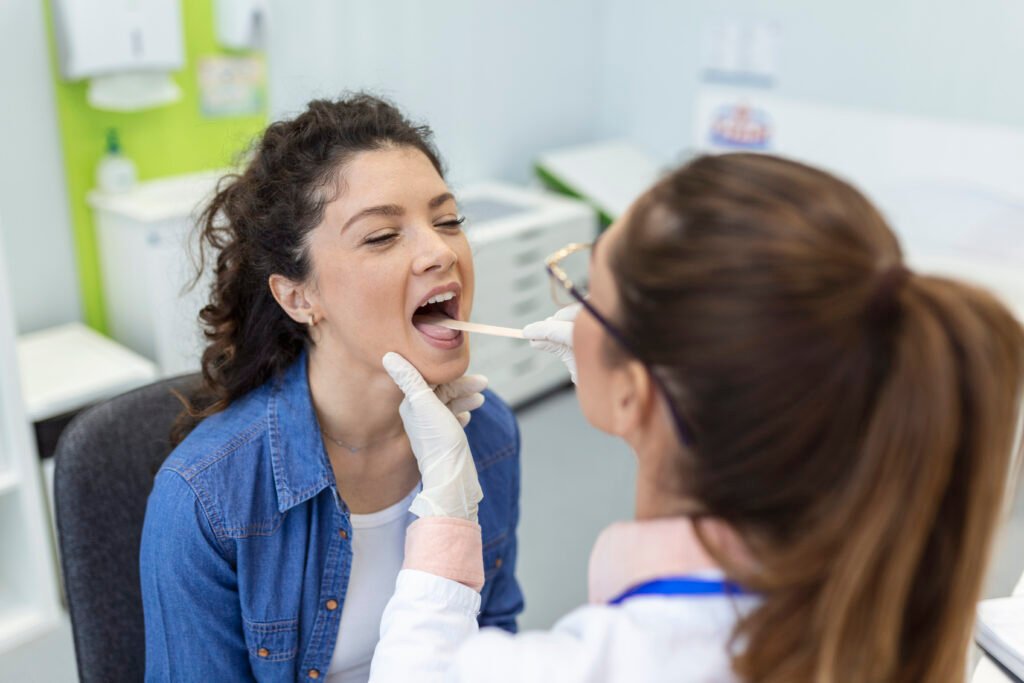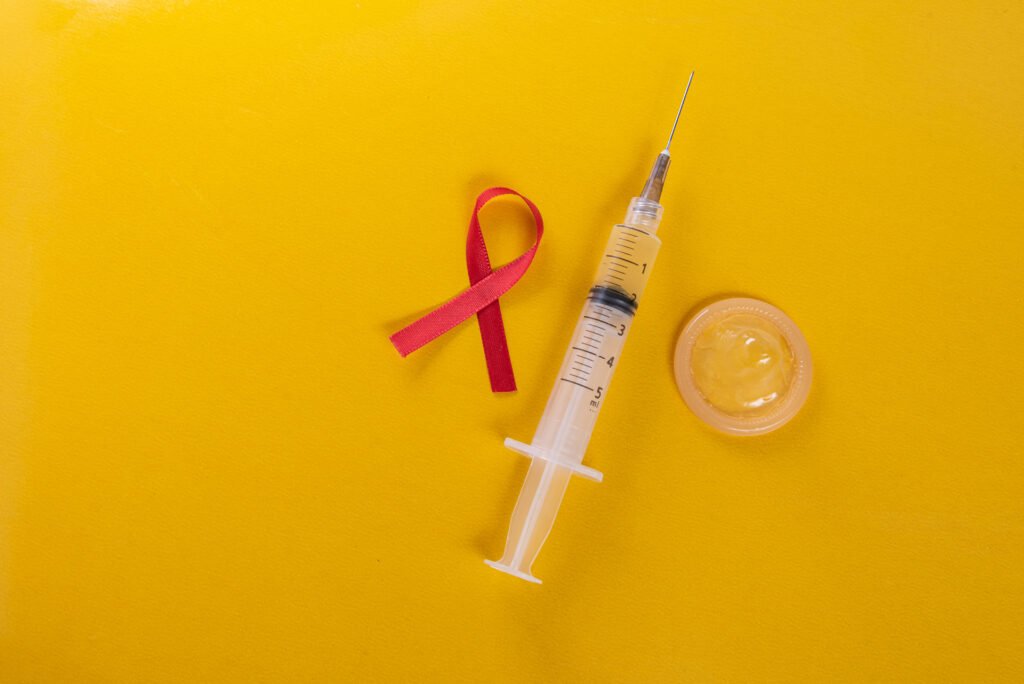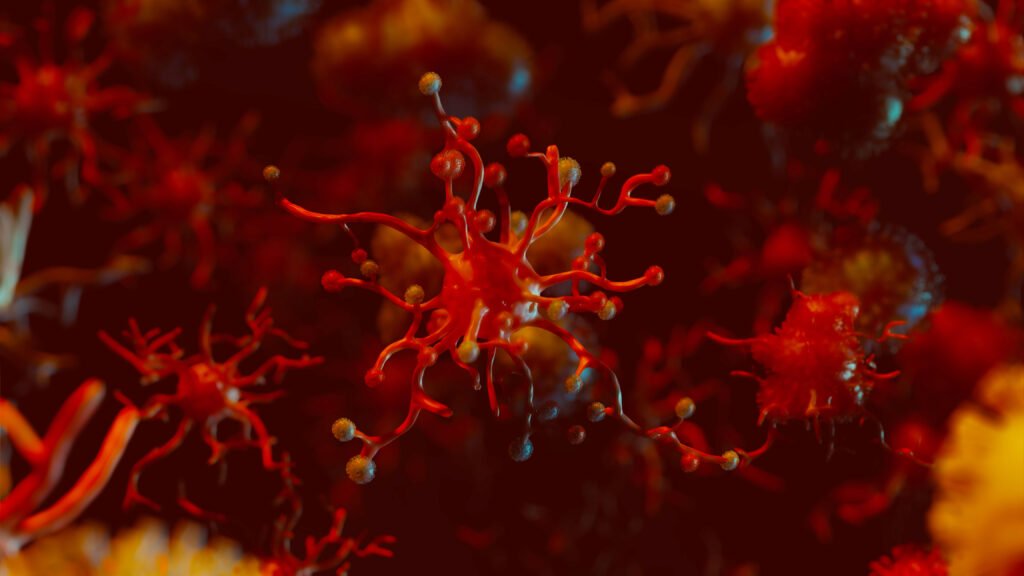Vaping: The Modern Danger Lurking Behind Flavored Smoke

Home An awareness blog by Healius Cancer & Hematology Clinics In recent years, vaping has become a popular trend—especially among teens and young adults—marketed as a “safer” alternative to smoking. But behind the fruity flavors and sleek devices lies a serious health risk that often goes unnoticed. At Healius Cancer & Hematology Clinics, we are committed to raising awareness about the dangers of vaping and how it can increase your risk of cancer. What Exactly Is Vaping? Vaping involves inhaling an aerosol (commonly called vapor) produced by an electronic cigarette or similar device. These aerosols usually contain: Nicotine Ultrafine particles Volatile organic compounds Heavy metals like nickel, tin, and lead Cancer-causing chemicals such as formaldehyde and acrolein Though marketed as “cleaner” than cigarettes, these ingredients are far from safe. Vaping and Cancer: What’s the Connection? Many of the chemicals found in vape liquids are known carcinogens, which means they can directly damage DNA and promote the growth of cancer cells. 1. Lung Cancer E-cigarette aerosols contain toxic compounds that can irritate lung tissue and trigger long-term inflammation—a key factor in cancer development. Several studies have shown that prolonged exposure can alter healthy cells, paving the way for lung cancer. 2. Oral and Throat Cancer Vaping increases the risk of oral cancers, especially due to the presence of formaldehyde and acetaldehyde. These chemicals attack the lining of the mouth and throat, just like tobacco products. 3. Bladder Cancer Toxins inhaled during vaping can accumulate in the bladder. Research has identified some cancer-causing substances in vape users’ urine, linking vaping to an increased risk of bladder cancer. The Healius Perspective At Healius Cancer & Hematology Clinics, our specialists are seeing a disturbing trend: more young people developing early signs of respiratory illnesses, throat inflammation, and abnormal cellular changes linked to vaping. We strongly advocate for early screening and preventive health education, especially among adolescents and young adults. Vaping Myths—Busted! “It’s just flavored water vapor.” False. The aerosol contains toxic and cancer-causing chemicals—not just water. “It’s safer than smoking.” Misleading. While vaping may have fewer chemicals than traditional cigarettes, the damage it causes is still significant and potentially long-term. “It doesn’t affect young people.” Untrue. Youth and teens are more vulnerable as their lungs and brain are still developing, increasing their susceptibility to nicotine addiction and long-term damage. What Can You Do? Educate your children and peers about the real dangers of vaping. If you vape, seek help to quit. There are safe, evidence-based programs available. Get screened. If you’re a regular vaper, talk to our experts about early detection and health monitoring. Prevention is the Best Protection Your health is your most valuable asset. Don’t trade it for a moment of flavored smoke. At Healius Cancer & Hematology Clinics, we believe in empowering people with knowledge and preventive care to reduce cancer risks in our community.
International Yoga Day: The Healing Power of Yoga for Cancer Patients

Home Each year, June 21st is celebrated as International Yoga Day, a global reminder of the ancient Indian practice that harmonizes the body, mind, and spirit. At Healius Cancer & Hematology Clinics, we believe in blending modern medicine with holistic healing approaches—and yoga plays a powerful role in the journey of cancer care and recovery. Why Yoga Matters for Cancer Patients A cancer diagnosis can be physically exhausting and emotionally overwhelming. From managing treatment side effects to coping with fear, stress, and fatigue, the journey is often challenging. Yoga offers gentle yet impactful support throughout this journey. Here’s how: 1. Reduces Stress and Anxiety Breathing exercises and meditation help calm the mind and reduce anxiety levels. This mental peace can improve treatment response and emotional strength. 2. Improves Physical Strength and Flexibility Gentle yoga poses improve blood circulation, strengthen muscles weakened by chemotherapy or radiation, and enhance balance—helping patients regain control over their bodies. 3. Boosts Immunity Practicing yoga regularly can strengthen the immune system, which is crucial for cancer patients whose immunity is often compromised due to treatment. 4. Improves Sleep and Reduces Fatigue Restorative yoga and relaxation techniques enhance the quality of sleep, which is often disrupted during cancer treatment, and help in combating fatigue. 5. Promotes Emotional Well-being Yoga nurtures a sense of inner calm and positivity. It helps patients reconnect with themselves and build resilience during tough times. We understand that healing is not just about treating the disease—it’s about caring for the whole person. Our team encourages patients to explore yoga as a supportive therapy along with their medical treatment. This International Yoga Day, Let’s Embrace Holistic Healing Yoga is more than just exercise—it’s a lifeline for many on their cancer journey. At Healius, we stand by our patients every step of the way, combining cutting-edge cancer treatments with the healing touch of yoga. Your path to recovery can be stronger, calmer, and more balanced—with yoga.
Possible Side Effects of Chemotherapy: How to Manage Them and When to CONSULT Your Doctor

Home Chemotherapy is one of the most effective weapons against cancer, but it can affect healthy cells too, causing a range of side effects. These side effects vary by individual, drug type, and dosage. Understanding how to manage them — and when to alert your doctor — is crucial for safe and comfortable treatment. Here are few insights from the team of Healius Cancer and Hematology clinics. Common Side Effects of Chemotherapy and Their Management Fatigue What Happens: Ongoing tiredness, not relieved by rest. Management: Moderate exercise like walking, rest often, conserve energy, and include light activity. Stay hydrated with home-made non-sugary drinks When to CONSULT the Doctor: If fatigue becomes severe or interferes with daily life. Nausea and Vomiting What Happens: Stomach discomfort, vomiting episodes. Management: Take anti-nausea medications, eat bland meals, stay hydrated. When to CONSULT the Doctor: If vomiting is persistent or prevents fluid/food intake. Diarrhea What Happens: Frequent, loose stools due to intestinal lining damage. Management: Eat a low-fiber, bland diet (rice, banana, toast). Stay hydrated with electrolyte drinks. When to CONSULT the Doctor: If diarrhea lasts more than 24 hours, it leads to weakness or dizziness or includes blood. Constipation What Happens: Difficulty passing stools, often due to medications or inactivity. Management: Increase fluids, eat high-fiber foods, and walk regularly. Use stool softeners if recommended. When to CONSULT the Doctor: If no bowel movement for more than 3 days or if pain/bloating is severe. Hair Loss (Alopecia) What Happens: Loss of hair on scalp, eyebrows, and body. Management: Use gentle hair care. Consider scarves, caps, or wigs. When to CONSULT the Doctor: If scalp irritation, rashes, or sores appear. Infections and Low Immunity What Happens: Low white blood cells increase infection risk. Management: Wash hands often, avoid sick contacts, and cook thoroughly. When to CONSULT the Doctor: If you develop a fever ≥100.4°F (38°C), chills, or sore throat. Mouth Sores (Mucositis) What Happens: Painful ulcers in the mouth and throat. Management: Use soft toothbrushes, avoid acidic/spicy foods, and rinse with baking soda solution. When to CONSULT the Doctor: If sores prevent eating or cause bleeding. Taste and Smell Changes What Happens: Metallic taste, reduced sense of taste or smell. Management: Use plastic utensils, add flavor-enhancers (lemon, herbs), and try cold foods. When to CONSULT the Doctor: If it leads to poor nutrition or major appetite loss. Appetite and Weight Changes What Happens: Reduced appetite, unintended weight loss or gain. Management: Eat small, frequent meals; consider nutritional supplements. When to CONSULT the Doctor: If weight changes are drastic or you are unable to eat. Neuropathy What Happens: Numbness, tingling, or pain in hands/feet. Management: Avoid extreme temperatures, wear shoes, and monitor sensations. When to CONSULT the Doctor: If it affects walking, gripping, or worsens suddenly. Bleeding and Bruising What Happens: Due to low platelet counts. Management: Use soft toothbrushes, avoid sharp objects or injury risks. When to CONSULT the Doctor: If you notice unexplained bruising, nosebleeds, or blood in urine/stool. Organ Function Changes What Happens: Some chemo drugs can affect heart, liver, or kidney function. Management: Regular blood tests and organ monitoring as prescribed. When to CONSULT the Doctor: If you experience swelling, shortness of breath, jaundice (yellow skin/eyes), or unusual urine color. Depression and Anxiety What Happens: Emotional distress, sadness, or constant worry. Management: Talk to a counselor, join support groups, and discuss treatment for mental health. When to CONSULT the Doctor: If you feel hopeless, overwhelmed, or have thoughts of self-harm. Cognitive Changes (‘Chemo Brain’) What Happens: Memory lapses, foggy thinking, difficulty concentrating. Management: Use reminders, organize your day, get proper rest. When to CONSULT the Doctor: If symptoms worsen or interfere with safety. When to Seek Immediate Medical Help CONSULT your doctor or go to the emergency room if you experience: Fever of 100.4°F (38°C) or higher Severe vomiting or diarrhea Chest pain or shortness of breath Sudden confusion or extreme fatigue Bleeding that won’t stop Swelling, jaundice, or reduced urine output Suicidal thoughts or severe emotional distress Final Note from Healius Cancer and Haematology Clinics Chemotherapy is a journey — physically and emotionally. Most of the times if the Medical Oncologist escalates the dose gradually as tolerated by the patient, the side effects can either be completely prevented or managed in the early phase itself. Most side effects can be managed with early intervention, lifestyle adjustments, and support from our oncology team. Never hesitate to report symptoms and obtain symptomatic relief immediately without procrastinating. Quick action can make your treatment safer and avoid grave complications. A stitch in time saves nine. For more information, appointments, or referrals, visit https://healiuscancerhematology.com/
Celebrating National Cancer Survivors Month: A New Era of Hope and Healing

Home June marks National Cancer Survivors Month—a time to honor the strength, resilience, and journeys of millions who have faced cancer and emerged stronger. Thanks to groundbreaking medical advances, early detection, and holistic care, survival rates have significantly improved, offering renewed hope to patients and their families. The Rise in Survival Rates: A Testament to Progress Over the past five decades, cancer survival rates have seen remarkable improvements. In the UK, for instance, 50% of individuals diagnosed with cancer now survive for at least 10 years, a significant increase from just 24% in the 1970s . Similarly, in the United States, the five-year relative survival rate for all cancers combined improved from 58% during the mid-1970s to 85% during 2013 through 2019 in children .cancerresearchuk.org+2theguardian.com+2thesun.co.uk+2usafacts.org+2acsjournals.onlinelibrary.wiley.com+2cancercenter.com+2 These advancements are attributed to factors such as early diagnosis, personalized treatments, and a deeper understanding of cancer biology. Innovations like immunotherapy, targeted therapies, and CAR-T cell treatments have revolutionized cancer care, leading to better outcomes and improved quality of life for survivors. Healius: Pioneering Comprehensive Cancer Care Healius stands at the forefront of this transformative era, offering comprehensive cancer care that encompasses advanced diagnostics, personalized treatment plans, and supportive services. By integrating cutting-edge technology with compassionate care, Healius ensures that patients receive timely and effective interventions tailored to their unique needs. Moreover, Healius emphasizes the importance of early detection through regular screenings and awareness programs, recognizing that early-stage diagnosis significantly enhances treatment success rates. Their multidisciplinary approach brings together oncologists, radiologists, pathologists, and support staff to provide holistic care that addresses both the physical and emotional aspects of cancer treatment. Empowering Survivors Through Lifestyle Interventions Beyond medical treatments, lifestyle modifications play a crucial role in cancer survivorship. Recent studies highlight the benefits of structured exercise programs in reducing cancer recurrence and improving survival rates. For example, a decade-long trial involving stage three colon cancer patients demonstrated that a personalized exercise regimen led to a 28% reduction in cancer recurrence risk after 5 years and 37% after 8 years . Healius integrates such evidence-based lifestyle interventions into their care plans, offering patients resources and guidance on nutrition, physical activity, and mental well-being. By addressing the whole person, Healius Cancer & Hematology Clinics empowers survivors to lead healthier, more fulfilling lives post-treatment. Looking Ahead: A Future Filled with Hope As we observe National Cancer Survivors Month, it’s essential to acknowledge the strides made in cancer care and the unwavering spirit of survivors. Organizations like us exemplify the commitment to advancing cancer treatment and survivorship, ensuring that patients not only survive but thrive. With ongoing research, technological innovations, and a patient-centered approach, the future holds promise for even higher survival rates and improved quality of life for cancer survivors worldwide.
Young and Strong: Overcoming Breast Cancer in Your Teens

Home Breast cancer is often thought to affect older women, but the truth is, it can occur at any age—including during the teenage years. Though rare, breast cancer in adolescents and young adults is a growing concern. According to studies, it tends to be more aggressive in younger patients and is often diagnosed at a later stage, which makes early detection even more critical. Causes and Risk Factors The exact causes of breast cancer in teens and young adults aren’t fully understood. However, certain risk factors have been identified. Genetic mutations, particularly in genes like BRCA1 and BRCA2, play a major role. A family history of breast cancer—especially if diagnosed at a young age—can also increase the risk. Exposure to radiation, either from previous medical treatments or environmental sources, may further elevate the risk. Symptoms and Early Detection Symptoms of breast cancer in young individuals are similar to those in older adults and may include: A lump or thickening in the breast Changes in breast size or shape Nipple discharge or changes Skin changes such as redness or dimpling Awareness is key. Young people should be familiar with how their breasts normally look and feel, and report any unusual changes to a doctor. While breast self-exams aren’t a substitute for medical screenings, they are a good way to stay in tune with your body. At Healius Cancer & Hematology Clinics, Dr. Mangesh Kamath, a leading medical oncologist, emphasizes the importance of early evaluation and genetic counseling for young patients with a family history of cancer. “Early detection in young patients not only improves outcomes but also opens up the possibility of less invasive treatment options,” he says. Treatment and Survival Treatment for breast cancer in younger patients often includes a combination of surgery, chemotherapy, radiation therapy, and hormone therapy. However, younger individuals may have unique needs that require personalized care plans. Fertility preservation, long-term side effects, and psychological support are crucial considerations. Thanks to advanced technologies and personalized treatment approaches at Healius Cancer & Hematology Clinics, survival rates continue to improve. Dr. Mangesh Kamath and his multidisciplinary team provide compassionate, comprehensive care tailored to each patient’s journey. Living with Breast Cancer A breast cancer diagnosis in your teens or early twenties can feel overwhelming, but it is not insurmountable. Support systems, both medical and emotional, make a huge difference. It’s important to lean on family, friends, and cancer support groups. Maintaining a healthy lifestyle—through exercise, proper nutrition, and stress management—can also support recovery and long-term well-being. At Healius, patients receive more than just medical treatment—they find a supportive community committed to walking with them every step of the way. Final Word While breast cancer in teens is uncommon, it’s a serious health concern that requires awareness and proactive care. By understanding the symptoms, recognizing the risks, and seeking expert guidance, young people can take control of their breast health. If you have any concerns or questions, don’t hesitate to consult Dr. Mangesh Kamath or the specialists at Healius Cancer & Hematology Clinics. Early action can make all the difference. For Appointment Contact : +91 9900613143
Ovarian Cancer: Navigating the Challenges of Late Diagnosis, Biomarker Limitations, and Tumor Heterogeneity

Home Ovarian cancer remains one of the most lethal gynaecologic malignancies, with a five-year survival rate of only ~50% for advanced-stage cases. Despite advances in treatment, significant challenges persist late diagnosis, inefficient biomarkers, and extreme tumour heterogeneity, each contributing to poor outcomes. Among these, late diagnosis is arguably the most formidable challenge, as it drastically limits treatment efficacy and survival. However, emerging research is paving the way for improved detection, personalized therapies, and novel treatment strategies. Late Diagnosis: The Biggest Hurdle in Ovarian Cancer Management Why Late Diagnosis is So Devastating ~70% of ovarian cancer cases are diagnosed at Stage III or IV, when the disease has already metastasized. No reliable screening test exists (unlike mammograms for breast cancer or Pap smears for cervical cancer). Symptoms (bloating, pelvic pain, urinary urgency) are non-specific, often leading to misdiagnosis (e.g., IBS, urinary infections). Consequences of Late Detection Limited surgical options: Optimal cytoreduction (tumour debulking) is harder in advanced disease. Higher chemoresistance risk: Late-stage tumours often develop resistance to platinum-based therapies. Poor survival rates: Early-stage (I/II) survival exceeds 90%, but late-stage survival drops to ~30%. Efforts to Improve Early Detection Liquid biopsies (circulating tumor DNA, exosome profiling) are under investigation. Multi-cancer early detection (MCED) tests are being explored, though none are yet FDA-approved for ovarian cancer. Awareness campaigns aim to educate on symptoms.Biomarker Limitations: The Challenge of Precision Medicine Current Biomarkers and Their Shortcomings CA-125: The most widely used biomarker, but non-specific (elevated in endometriosis, pregnancy, other cancers). HE4: Better specificity but still not definitive for early detection. HRD Testing: Helps identify PARP inhibitor responders, but 22% of high-grade serous ovarian cancers (HGSC) show spatial heterogeneity in HRD scores, leading to inconsistent results. Folate Receptor Alpha (FRα): Used for mirvetuximab soravtansine eligibility, but only ~35-40% of patients have sufficient FRα expression. Emerging Biomarkers Multi-omics profiling (genomics, proteomics, metabolomics) is identifying new signatures (e.g., FXYD6, linked to ferroptosis and immunotherapy resistance). Tumor microenvironment (TME) biomarkers (e.g., CD8+ T-cell infiltration) may predict immunotherapy response. Tumor Heterogeneity: A Major Barrier to Effective Treatment Types of Heterogeneity in Ovarian Cancer Spatial heterogeneity: Different tumour regions (e.g., ovary vs. omentum) show varying biomarker expression (e.g., PR, Ki67). Temporal heterogeneity: Recurrent tumours often evolve, acquiring new mutations (e.g., **BRCA reversion mutations** causing PARPi resistance). Molecular subtypes: High-grade serous (HGSC): Most common (~70%), highly aggressive, TP53 mutations. Low-grade serous (LGSC): Rare (~10%), younger patients, often KRAS/BRAF-mutated. Clear cell & endometrioid: Differ in chemosensitivity and molecular drivers. Impact on Treatment Chemotherapy resistance: Clonal evolution leads to subpopulations that evade treatment. Immunotherapy limitations: “Cold” tumours (low T-cell infiltration) respond poorly to checkpoint inhibitors. Current and Emerging Treatments to Overcome These Challenges Targeted Therapies PARP inhibitors (olaparib, niraparib): Effective in BRCA-mutated and HRD-positive tumours, but resistance remains a hurdle. Antibody-drug conjugates (mirvetuximab soravtansine): For FRα-positive platinum-resistant cases. MEK inhibitors (trametinib, binimetinib): Show promise in low-grade serous ovarian cancer (LGSC). Immunotherapy & Novel Approaches Combination therapies: PARPi + immunotherapy (e.g., pembrolizumab) are being tested to convert cold tumours to hot. Ferroptosis inducers: Targeting FXYD6 to trigger iron-dependent cell death. Adoptive cell therapy (CAR-T, TILs): Early-phase trials show potential in recurrent disease. Preventive Strategies Risk-reducing surgery: Salpingectomy (fallopian tube removal) and Oophorectomy (removal of ovaries) for BRCA carriers may prevent HGSOC. Genetic testing expansion: Only ~50% of ovarian cancer patients receive germline testing, missing hereditary risks (e.g., Lynch syndrome). Which Challenge is the Greatest? While biomarker limitations and tumour heterogeneity complicate treatment, late diagnosis remains the most critical challenge — without early detection, even the best therapies are less effective. However, advances in multi-omics profiling, liquid biopsies, and novel targeted agents are offering hope. The future of ovarian cancer management lies in: Better early detection tools (e.g., AI-driven imaging, blood-based assays). Comprehensive biomarker testing at diagnosis (HRD, FRα, BRCA). Personalized combination therapies to overcome resistance. With sustained research and advocacy (e.g., OCRA’s $6M funding in 2025), we may finally shift ovarian cancer from a silent killer to a manageable disease.
Understanding Mouth Cancer

Home Mouth cancer, also known as oral cancer, is a serious but treatable condition—especially when diagnosed early. At Healius Cancer & Hematology Clinics, we believe that awareness is the first step toward prevention and early intervention. In this blog, we break down the most important aspects of mouth cancer: its symptoms, causes, and early warning signs. What Is Mouth Cancer? Mouth cancer refers to cancer that develops in any part of the oral cavity, including the lips, tongue, cheeks, gums, roof of the mouth (palate), floor of the mouth, and throat. It usually begins in the squamous cells lining the mouth and can spread quickly if left untreated. Early Symptoms and Warning Signs Detecting mouth cancer early dramatically increases the chances of successful treatment. Be alert to the following warning signs: A persistent sore or ulcer that doesn’t heal within 2–3 weeks Red or white patches inside the mouth Unexplained bleeding in the mouth Lump or thickening in the cheek or neck Difficulty in swallowing, speaking, or moving the jaw Numbness or pain in the mouth or lips Persistent sore throat or a feeling of something stuck in the throat Sudden weight loss or voice changes If you notice any of these symptoms, it’s crucial to consult a cancer specialist without delay. What Causes Mouth Cancer? Several risk factors are associated with the development of mouth cancer: Tobacco use (smoking or chewing) – the leading cause Excessive alcohol consumption HPV infection (Human Papillomavirus) Poor oral hygiene and chronic irritation Exposure to the sun (for lip cancer) Diet low in fruits and vegetables Genetic predisposition At Healius Cancer & Hematology Clinics Bangalore, we emphasize both lifestyle modification and regular screenings to lower risk and catch potential problems early. Why Early Detection Matters When detected in the early stages, oral cancer can often be treated successfully with minimally invasive procedures. Unfortunately, many cases are diagnosed too late due to a lack of awareness. Healius Cancer & Hematology Clinics offer advanced head & neck cancer screenings, including oral cancer detection services led by experienced oncologists. Our comprehensive care ensures you get the right diagnosis, timely treatment, and compassionate support throughout your journey. How We Can Help Expert Team of Oncologists & Hematologists Advanced Diagnostic Tools & Biopsy Services Customized Treatment Plans: Surgery, Radiation, Chemotherapy & Immunotherapy Supportive Care for Nutrition, Pain Management, and Emotional Wellbeing Early Screening & Preventive Counselling Book a Consultation Whether you’re experiencing symptoms or want to schedule a routine screening, Healius Cancer & Hematology Clinics are here for you. Your health is in your hands—don’t wait. Book your appointment today at www.healiuscancerclinic.com or call us for immediate assistance +91 9900613143 Final Thoughts Mouth cancer doesn’t have to be a silent threat. With awareness, timely diagnosis, and expert care from Healius, it is possible to overcome it. Stay informed, stay vigilant—and spread the word.
Cancer Vaccines

Home Cancer vaccines represent a promising frontier in medical science, designed to either prevent cancer from developing or treat existing cancers by boosting the body’s immune response against cancer cells. Cancer vaccines offer a potential solution to the problems facing the field of oncology in the coming decade. These therapies benefit from economies of scale, simple administration, and may be more effective in earlier disease settings than later. Traditional vaccines aim to prevent or ameliorate infectious diseases through priming immune responses to exogenous antigens associated with given pathogens before a natural infection occurs. Similarly, cancer vaccines seek to induce an anti-tumor immunity using an appropriate delivery vector to prime responses to cancer antigens presented on the surface of tumour cells. Types of Cancer Vaccines Preventive (Prophylactic) Vaccines These are used to prevent cancer caused by viruses. HPV Vaccine: Protects against the human papillomavirus, which is linked to cervical, anal, throat, and other cancers. Hepatitis B Vaccine: Reduces the risk of liver cancer caused by Hepatitis B infection. Therapeutic Vaccines These are given to cancer patients to help the immune system recognize and destroy cancer cells. Research is ongoing for cancers like melanoma, prostate, and lung cancer. Therapeutic cancer vaccines can stop tumour from growing or spreading, destroys cancer cells still in the body after surgery and radiation therapy and also prevents relapse. Provenge (Sipuleucel-T): Approved for advanced prostate cancer. IMA901: Investigated for kidney cancer. Bacillus Calmette-Guerin (BCG): Approved for the treatment of early-stage cancer Nadofaragene firadonevec (Adstiladrin®): Approved for treatment of early-stage bladder cancers that have progressed despite BCG therapy. GVAX: A group of experimental vaccines for pancreatic and other cancers. Talimogene laherparepvec (T-VEC): An oncolytic virus-based vaccine approved for melanoma. Role in Cancer Prevention Early Intervention: Vaccines like HPV are most effective when administered before exposure to the virus, typically in adolescence. Reduced Burden: Mass vaccination programs can significantly reduce the incidence of certain cancers, particularly in women. Cost-effective: Long-term savings in healthcare costs by preventing cancers before they develop. Government of India’s Initiatives The Government of India is actively promoting cancer prevention through vaccination and awareness: Introduction of HPV Vaccine in National Immunization Programme In 2024, India included the indigenously developed HPV vaccine ‘CERVAVAC’ in the Universal Immunization Programme. This aims to reduce the incidence of cervical cancer, the second most common cancer among Indian women. This vaccine is advisable for girls who are above 9 yrs and women. Public Awareness Campaigns Nationwide campaigns promote awareness about the importance of early vaccination and routine screening. Collaboration with NGOs and digital platforms to reach rural and underserved communities. Screening and Early Detection Under Ayushman Bharat, health and wellness centre’s provide free screening for common cancers (oral, breast, and cervical). Integration of vaccine awareness in school health programs. Conclusion Cancer vaccines, especially the HPV and Hepatitis B vaccines, offer a significant opportunity to prevent cancers before they occur. With proactive steps like launching affordable vaccines and integrating them into public health schemes, India is paving the way for a cancer-free future.
Haemophilia

Home Haemophilia is often thought of as a “man’s disease,” but women and girls can have it too. Though less commonly diagnosed, females with haemophilia can experience significant bleeding issues that impact their daily lives. Understanding Haemophilia in Women Haemophilia is a genetic disorder where the blood doesn’t clot properly due to a deficiency in clotting factors. It’s linked to the X chromosome, meaning males (who have one X) are more likely to have severe symptoms. However, females (who have two X chromosomes) can also inherit the mutation. Traditionally, women were labelled as “carriers,” but many actually have mild, moderate, or even severe haemophilia. Symptoms in Women and Girls Women with haemophilia or low clotting factor levels may experience: Heavy and prolonged menstrual periods (menorrhagia) Frequent nosebleeds and easy bruising Excessive bleeding after childbirth, surgery, or dental work Joint and muscle bleeds, similar to male patients These symptoms are often overlooked or misdiagnosed, leading to delayed treatment. Challenges in Diagnosis and Care Many doctors still hesitate to diagnose women with haemophilia, instead labelling them as carriers. This medical bias means women often struggle for years before getting proper care. Additionally, female-specific issues—like menstrual bleeding—are sometimes dismissed as normal, even when they indicate an underlying bleeding disorder. Treatment and Management Women with haemophilia can benefit from the same treatments as men, including: Clotting factor replacement therapy Antifibrinolytic drugs (to reduce bleeding) Hormonal treatments to manage menstrual bleeding Preventive care to protect joints from damage Raising awareness is crucial for ensuring timely diagnosis and treatment for women and girls with haemophilia. No one should suffer due to outdated misconceptions. Breaking the Stigma The idea that “only men bleed” has been debunked—women and girls with haemophilia deserve recognition, care, and support. Advocacy groups, medical professionals, and patients are working together to push for better diagnosis, treatment, and awareness. It’s time to change the narrative: Women bleed too, and they deserve the care they need.
Breaking New Ground

Home Head and neck cancers affect thousands of individuals globally, but thanks to innovative research and clinical advancements, patients now have access to more effective, personalized, and less invasive treatment options. At Healius Cancer & Hematology Clinics, we are proud to be at the forefront of these changes, offering our patients access to the best head & neck cancer treatment in Bangalore, with a strong emphasis on quality care and advanced therapeutic techniques. 1. Neoadjuvant Immunotherapy: A Game Changer Traditionally, surgery was considered a primary treatment option for many head and neck cancers. However, neoadjuvant immunotherapy—administered before surgery—is reshaping this approach. This treatment stimulates the body’s immune system to attack cancer cells before any surgical intervention. Combinations like anti-PD1 therapy with CD40 agonist antibodies have shown remarkable results, improving immune response and potentially reducing the need for aggressive surgery. 2. Combination Immunotherapy: Strength in Unity Recent trials reveal that dual immunotherapy regimens offer better outcomes compared to monotherapy. By combining different immunotherapeutic agents, doctors are seeing higher response rates, longer remission periods, and improved patient resilience. This development is particularly promising for patients looking for head & neck cancer treatment without surgery. 3. Precision-Driven Targeted Therapies In a landmark move, the FDA has granted breakthrough therapy designation to the combination of petosemtamab and pembrolizumab. This duo is proving highly effective in treating recurrent or metastatic head and neck squamous cell carcinoma (HNSCC), especially in patients with specific biomarker expressions. At Healius, our personalized approach ensures that patients receive treatments tailored to their unique cancer profile. 4. Advanced Imaging: Better Vision, Better Outcomes Innovative CT scan techniques and imaging methods now enable oncologists to visualize tumors with greater accuracy. These technologies help in better diagnosis, staging, and surgical planning—ensuring that treatment strategies are more precise and minimally invasive. 5. Promising Clinical Trials We stay connected with emerging global clinical trials. Studies combining drugs like avelumab, cetuximab, and palbociclib are showing potential in controlling tumor growth while minimizing side effects. These trials point toward a future where non-surgical treatment options for head and neck cancer could become the norm for many patients. Why Choose Healius? At Healius Cancer & Hematology Clinics, we’re committed to providing affordable, world-class cancer care. Led by renowned oncologist Dr. Mangesh Kamath, we specialize in personalized treatment plans that incorporate the latest medical advances. Whether you’re looking for the best head & neck cancer treatment or exploring head & neck cancer treatment without surgery, our team is here to guide you every step of the way. Early detection, timely intervention, and expert care save lives. If you or your loved one is navigating a head or neck cancer diagnosis, reach out to us today. 📍 Healius Cancer & Hematology Clinics – Your Partner in Healing.
